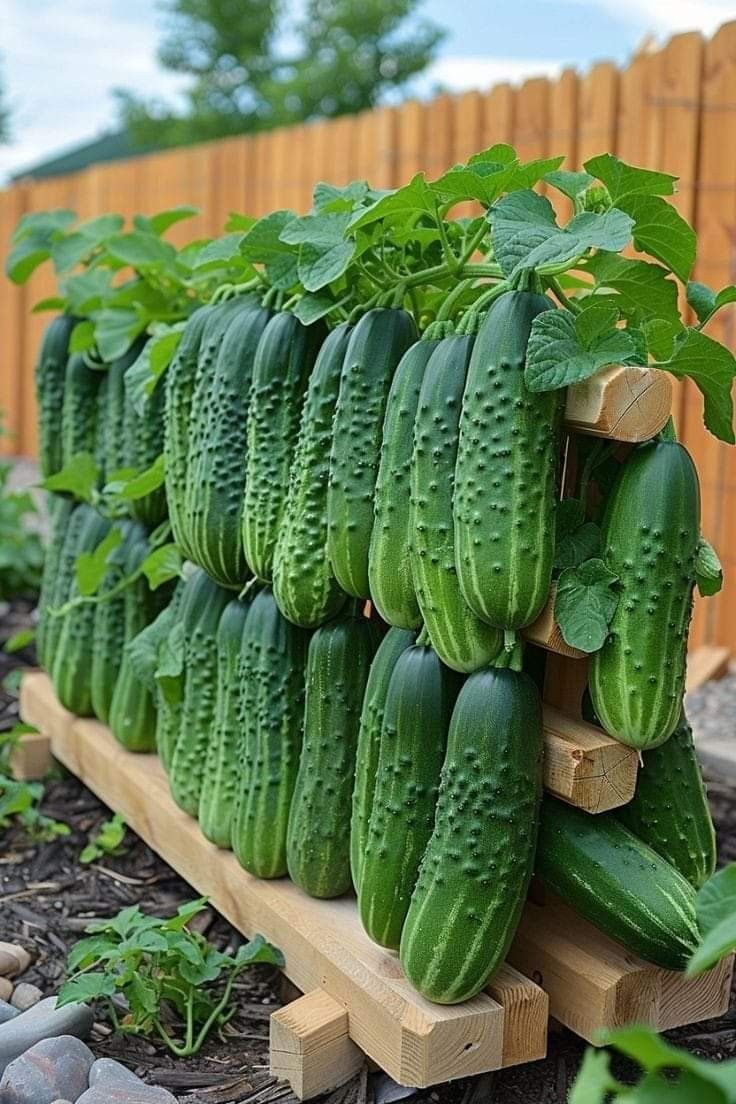10 Stages of Planting Cucumbers Successfully
Growing cucumbers is a rewarding gardening experience. These fast-growing, versatile vegetables are perfect for salads, pickles, and more. By following a structured approach, you can ensure a bountiful cucumber harvest. Here’s a step-by-step guide to help you plant cucumbers successfully and maximize your yield.
1. Select the Right Cucumber Variety
Choosing the right cucumber variety is the first step in planting successfully. There are two main types of cucumbers:
- Slicing Cucumbers: These are typically large, crunchy, and perfect for salads.
- Pickling Cucumbers: These smaller cucumbers are best suited for making pickles.
Consider your growing space, climate, and how you plan to use your cucumbers when choosing a variety. For smaller spaces, consider compact varieties or bush-type cucumbers that require less room to spread.
2. Prepare the Soil
Cucumbers thrive in loamy, well-draining soil that is rich in organic matter. Before planting:
- Test the soil pH: Cucumbers prefer a slightly acidic to neutral soil (pH 6.0-7.0).
- Amend the soil: Add compost or well-rotted manure to improve soil fertility and drainage. Cucumbers are heavy feeders, so enriching the soil is essential.
- Loosen the soil: Ensure the soil is loose and aerated so the cucumber roots can grow freely.
3. Choose the Right Planting Time
Cucumbers are sensitive to frost and prefer warm weather. Plant your cucumbers outdoors after the danger of frost has passed and the soil has warmed up to 70-85°F (21-29°C). Cucumbers are typically planted in late spring or early summer, depending on your climate zone.
- Indoor Starting: If you have a short growing season, you can start cucumber seeds indoors 2-3 weeks before the last frost date.
4. Planting Seeds or Seedlings
You can either plant seeds directly in the soil or use transplants (young cucumber plants). If planting seeds:
- Sow the Seeds: Plant cucumber seeds 1 inch deep in the soil, spacing them about 2-3 feet apart to allow for proper growth. Plant 2-3 seeds per hole, and thin the weaker ones after germination.
- Spacing: If using seedlings, plant them at the same depth they were in the nursery pot, spacing the plants about 2-3 feet apart in rows.
- Row Width: Space rows about 3-4 feet apart to give cucumbers room to spread.
5. Watering and Irrigation
Cucumbers need consistent moisture to grow properly. They have shallow roots, so it’s essential to water regularly to keep the soil consistently moist but not soggy.
- Watering Frequency: Water cucumbers deeply once a week during dry periods, making sure the water reaches the root zone.
- Drip Irrigation or Soaker Hoses: These systems are ideal for cucumbers because they deliver water directly to the soil without wetting the leaves, reducing the risk of disease.
6. Mulching
Adding mulch around your cucumber plants is beneficial for several reasons:
- Weed Control: Mulch helps suppress weeds that compete with cucumbers for nutrients and water.
- Moisture Retention: It helps maintain soil moisture during hot, dry weather.
- Temperature Regulation: Mulch can keep the soil cooler and protect the roots from extreme heat.
Use organic mulch such as straw, grass clippings, or wood chips, and apply a 2-3 inch layer around the base of the plants.
7. Providing Support for Vines
Cucumbers are vining plants that require support to grow vertically, saving space and improving air circulation. You can use several methods for training cucumber vines:
- Trellises: Install a trellis or fence to support the growing vines. Cucumbers grow well when they’re allowed to climb, and a vertical garden saves space while keeping the fruits off the ground.
- Cages: Use circular cages to support bush varieties or small cucumber plants.
- Horizontal Spacing: For more compact spaces, horizontal growing on a flat surface using a raised bed or containers works well.
8. Fertilizing
Cucumbers are heavy feeders, meaning they require plenty of nutrients to grow well. After planting:
- Balanced Fertilizer: Use a balanced, slow-release fertilizer that provides essential nutrients like nitrogen, phosphorus, and potassium. Apply it at planting time and then again after 3-4 weeks.
- Compost: You can also use organic compost or worm castings to provide the necessary nutrients throughout the growing season.
- Avoid Excess Nitrogen: Too much nitrogen can lead to excessive vine growth at the expense of fruit production.
9. Pollination and Flowering
Cucumbers are self-pollinating, but they still rely on pollinators like bees to help with the process. To ensure successful pollination:
- Encourage Pollinators: Planting flowers like sunflowers or marigolds nearby will attract pollinators and improve cucumber fruit production.
- Male and Female Flowers: Cucumber plants produce both male and female flowers. The male flowers appear first, and the female flowers (which develop into fruit) need pollination from the male flowers.
10. Harvesting Cucumbers
Cucumbers are ready for harvest when they reach their full size and have a deep green color. They can be picked early for smaller, tender fruits, or left on the vine for a larger crop.
- Pick When Firm: Cucumbers should feel firm to the touch. Harvest them when they are the desired size, typically 6-8 inches for slicing varieties.
- Regular Harvesting: Pick cucumbers every 1-2 days to encourage continuous production and to prevent over-ripening.
Conclusion
Growing cucumbers in your garden or on your balcony is a rewarding endeavor, and with the right care and attention, you can enjoy a steady supply of fresh, crisp cucumbers. By following the 10 stages outlined above, you’ll ensure that your cucumber plants grow healthily, produce abundant fruit, and thrive in your space.
Remember to choose the right variety for your garden, provide adequate support, water regularly, and encourage pollinators. Happy gardening, and enjoy your cucumber harvest! 🥒🌱
